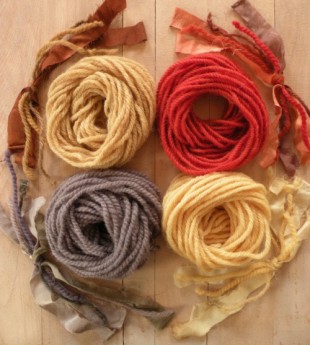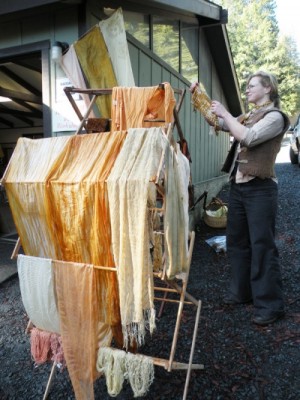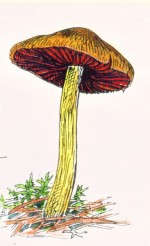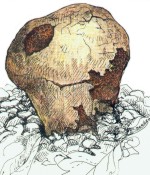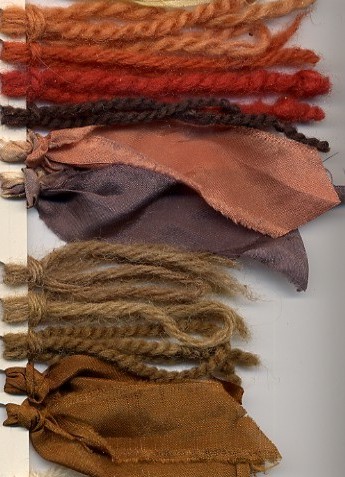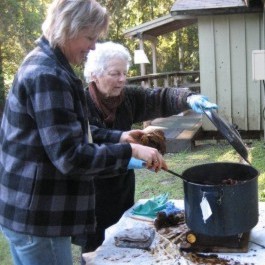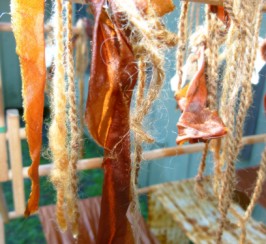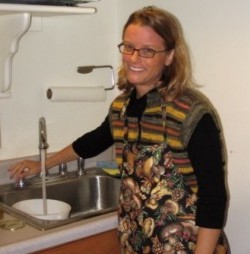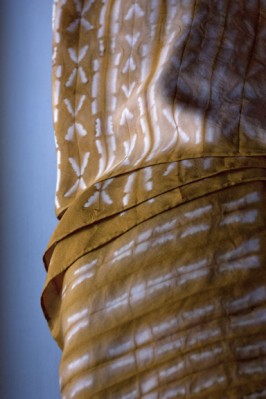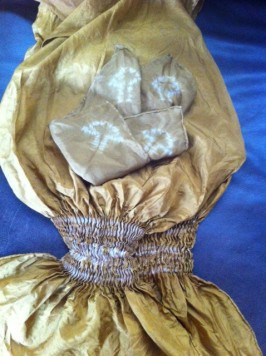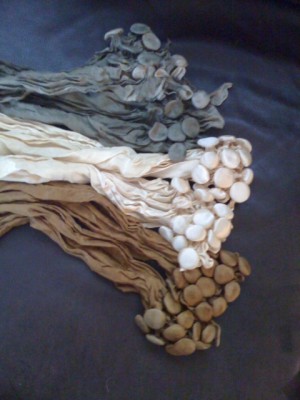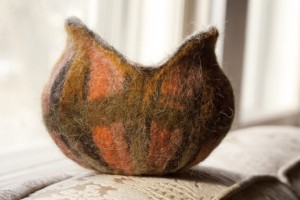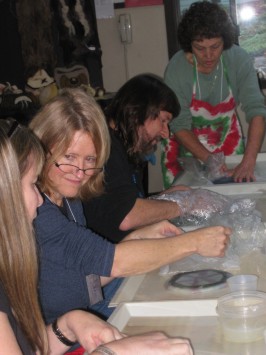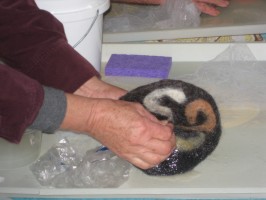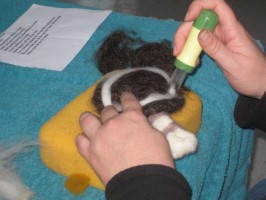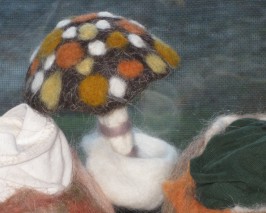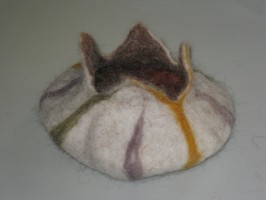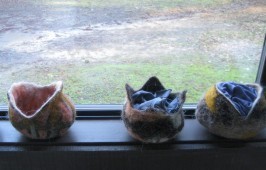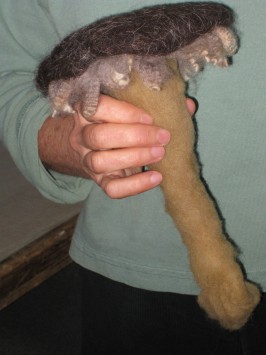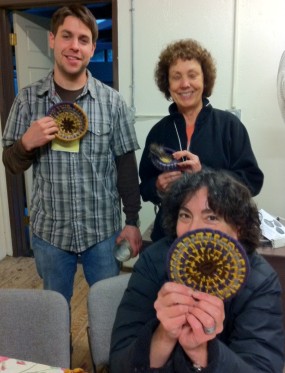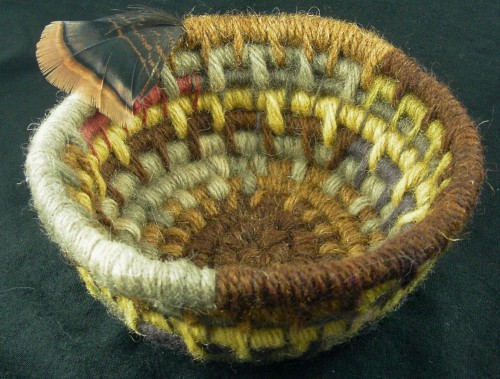Mushrooms for Color |
|
Jan 15 ~ 17, 2011Occidental, CA |
|---|
This year SOMA Wild Mushroom Camp 2011, (sponsored by the SOnoma County Mycological Assn.) offered 6 classes related to mushroom dyes: "Introduction to Mushroom Dyes" with Tina Wistrom, " "Intermediate Mushroom Dyes", "Advanced Mushroom Dyes/Open Studio" with Dorothy Beebee."Felting" workshops (which included shaped bowls and Needle felting) were again led by Marilyn Buss. "Shibori" silk dyeing with mushrooms and "Coiled Basketry" with mushroom dyed yarn were two new classes offered by Gail Still this year enhancing SOMA's exciting fungal Fiber Arts Program! |
|---|
MUSHROOM DYEING WORKSHOPS
Tina Wistrom took the reins in the Introductory Mushroom Dye Class on Sunday morning, introducing beginners to the finer points of collecting mushrooms and preparing them for the dyepot. Dermocybe semi-sanguinea were collected in Florence Oregon and donated by Anna Moore, but Omphalotus olivascens, Dermocybe phoenicea, Dermocybe cinnamomea, Sarcodon fuscoindicus, Gymnopilus spectabilis, Phaeolus schweinitzii, and Pisolithus tinctorius were all found in Sonoma County and the S.F. Bay Area. Some of the fungi were collected at various forays around the CYO Camp, and contributed to the dye classes in progress. The "Intermediate Mushroom Dye" class taught by Dorothy Beebee emphasized the process of mordanting and pH changes, and the Advanced "Dye your Own" free-for-all encouraged experenced dyers to bring their own fibers and experiment on their own with all of the left over dyes. This included dyeing the silver hair of the instructor with Pisolithus tinctorius! |
(Photo © Dustin Kahn) |
|---|
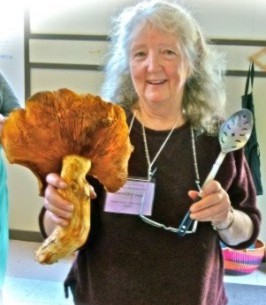 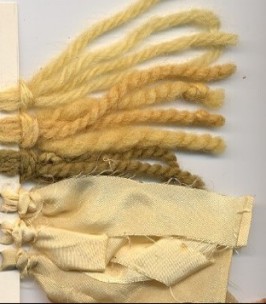 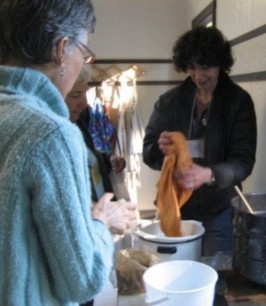 |
|---|
A giant Gymnopilus spectabilis and the dyes it produced! (Photos © Christie Collins, D. Beebee, & Dustin Kahn)
|
Dermocybe semi-sanguinea is very distinctive with its iridescent red gills, golden brown silky cap and yellow stalk, found in pine habitat usually in the company of other shrubs such as huckleberry, salal, and/or manzanita. It produces very light-fast blood red dyes with an alum mordant, and dark purple with iron. Anna Moore from Oregon supplied us with a good quantity of these dried dyers! The Pisolithus tinctorius puffball is a treasure of unlimited dark brown to bronze and gold dyes on wool and silk, using both alum and iron mordants, or without any mordant at all. It is best to use this fungus outdoors because of its highly odoriferous hydrophobic spores! It also makes a great hair dye... |
|
|---|
